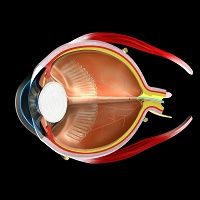Article
Case Report Supports the Role of NF-κB Activation in Antigen-B27 Uveitis
Author(s):
Serum levels of ubiquitin and proteasome correlated well with uveitis score.

A recent case report supported the hypothesis that autoimmune uveitis attacks are marked by elevated serum levels of the ubiquitin—proteasome protein degradation complex and activation of nuclear factor κB (NF-κB). The case was reported by Settimio Rossi, MD, and colleagues at the Eye Clinic and in the Department of Experimental Medicine of the Second University of Naples in Naples, Italy.
In the case report, an elevation in serum levels of ubiquitin and the proteasome 20S subunit correlated well with clinical uveitis score in a 52-year-old woman who tested positive for the human leukocyte antigen (HLA)-B27 gene after visiting an ophthalmology office for a severe attack of acute anterior uveitis in the right eye.
This attack was one of several she had in the last 3 years at a rate of 3—4 annually. Examination findings during the current attack resulted in a Standard Uveitis Nomenclature score of 3+. However, the investigators found no signs of ankylosing spondylitis or reactive arthritis on x-ray films or nuclear magnetic resonance images of the patient. Moreover, the patient had no psoriasis or inflammatory bowel disease.
The patient was admitted to the hospital and treated with an oral corticosteroid de-escalation protocol consisting of a daily dose of prednisone decreasing from 50 mg/day to 5 mg/day over 4 weeks. Completion of this protocol resulted in a reduction in clinical signs and uveitis score (to 0+) as well as a reduction in serum levels of ubiquitin and proteasome 20S to levels similar to those in a healthy volunteer.
According to the case report, oxidative stress and inflammatory stimuli activate the ubiquitin—proteasome complex, which serves as a key regulator of immune-inflammatory processes. In experimental models of endotoxic uveitis, this complex was involved in the induction of ocular damage through activation of NF-κB, the nuclear factor κ-light-chain-enhancer of activated B cells, which regulates the expression of associated inflammatory genes.
These findings led the Neapolitan team to speculate that the high expression and activity of components of the ubiquitin—proteasome complex found in their patient might be responsible for her ocular damage and high uveitis score.
However, they admitted they could not determine whether the decrease in serum levels of the two components noted resulted from steroid therapy or from the resolution expected in the natural course of acute anterior uveitis, particularly because this condition tends to be self-limiting even when recurrent.
The Neapolitan team plans to do a larger study to confirm this decrease in additional patients and to clarify what causes it. They stress the importance of such study in light of current treatments for autoimmune uveitis, which inhibit the immune response by using systemic agents, anti-IL-2 receptor antibodies, or interferon-α or by inhibiting the binding of tumor necrosis factor-α to its receptors.
In related research, a team at the Shenzhen Eye Hospital of Jinan University in Shenzhen, China, recently reviewed the prospects for using ligands that affect NF-κB signaling to treat uveitis. They noted that stimulating liver X receptor (LXR) blocked signal transduction from NF-κB signaling and suppressed the inflammatory response.
They also noted that some synthetic ligands were even more effective and potent in stimulating LXR than its endogenous ligand, oxysterol, was. In experimental autoimmune uveitis, these synthetic ligands also reduced the expression of the NF-κB subunit p65 and levels of inflammatory cytokines such as IL-17, which has been implicated in uveitis related to Behçet’s disease or to Vogt—Koyanagi–Harada disease.
IL-17 also appears to have a role in the pathogenesis of HLA-B27-associated uveitis, according to a recent study done at the Eye Hospital of Wenzhou Medical University in Zhejiang, China. In that study, a research team found that Th17 cells and IL-17 levels were remarkably increased and regulatory Treg cells were markedly decreased in the peripheral blood of patients with HLA-B27-associated uveitis compared with that of controls.
According to the Shenzhen reviewers, ligands that affect nuclear receptors that regulate gene expression are already used to treat prostate and breast cancer as well as type 2 diabetes. They predict that, as the role of nuclear receptors in ocular diseases becomes better understood, nuclear-receptor drugs will be used increasingly to treat uveitis, age-related macular degeneration, and diabetic retinopathy.
A report on the case study, “High levels of serum ubiquitin and proteasome in a case of HLA-B27 uveitis,” was published online in late February in the International Journal of Molecular Sciences. The Shenzhen review, “The association between nuclear receptors and ocular diseases,” was published in early February in Oncotarget, and the Wenzhou study, “Imbalance of Th17/Treg cells in pathogenesis of patients with human leukocyte antigen B27 associated acute anterior uveitis,” appeared in Science Reports in January.
Related Coverage:
Researchers in Portugal Examine Role of Interleukin-17 in Uveitis
Study: IL-1 Inhibitors Controlled Behçet’s Disease-Related Uveitis
Study Shows TNF Inhibitors Prevent Relapse of Uveitis in Most Patients with Ankylosing Spondylitis




